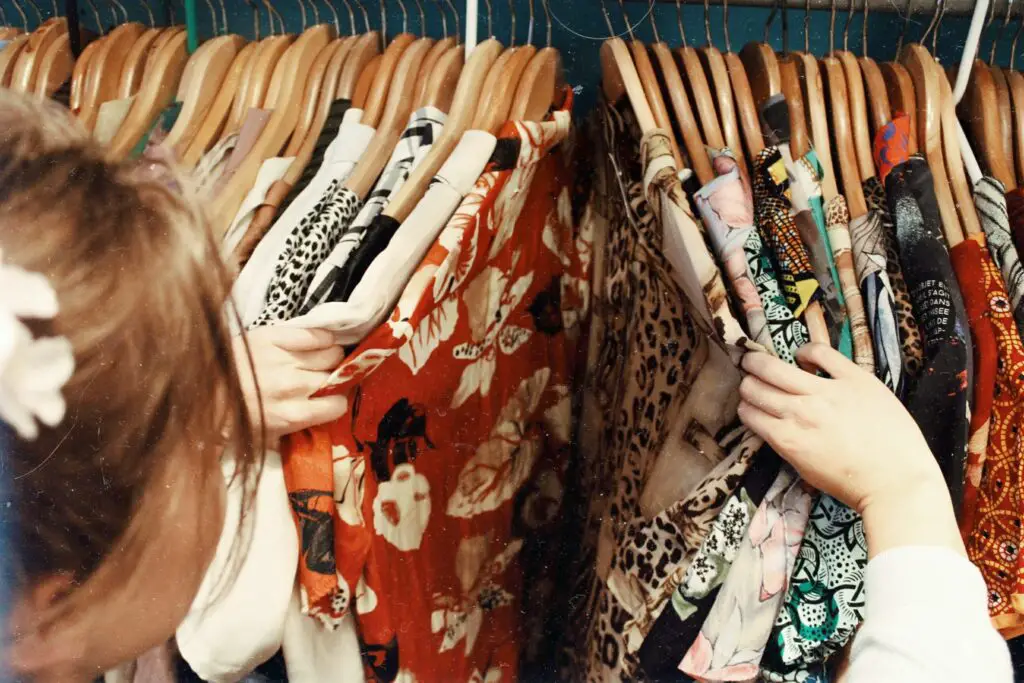
Fast fashion is a term used to describe the trend of producing and selling clothing designs at a much lower rate than traditional fashion houses.
Fast fashion garments are typically made from cheaper materials, making them less expensive for the consumer. Not all, but many fast fashion brands also utilize unfair manufacturing practices, such as using child labor.
The Difference Between Fast Fashion and Traditional Fashion
While the definition of fast fashion is relatively straightforward, a few factors distinguish it from traditional fashion.
The first and most obvious distinction is the speed at which these garments are produced and brought to market.
Fast fashion brands often design and release new collections multiple times per week, while traditional designers take months or even years to debut new lines.
Another key difference is the price point. Fast fashion items are almost always less expensive than their traditional counterparts, as the materials used are cheaper and underpaid workers in developing countries often perform the labor.
Finally, fast fashion tends to be more trend-driven than classic, meaning that styles change more frequently and are more flashy or revealing.
Where did Fast Fashion Start?
Fast fashion can be traced back to the late 1990s and early 2000s, when retailers like H&M, Zara, and Forever 21 began rapidly producing and selling affordable clothing inspired by runway looks.
This concept of “fast fashion” was a response to consumers’ desire for more affordable options and a constant flow of new styles.
Why Fast Fashion is Popular?
One reason for fast fashion’s popularity is the low cost of clothing. As mentioned previously, fast fashion items are often made from cheaper materials and produced in countries where labor is less expensive. This allows consumers to purchase trendy clothing at a fraction of the cost of traditional fashion pieces.
Another factor in fast fashion’s popularity is the constant stream of new styles. The rapid production and release of new collections mean that there are always fresh items to choose from, leading consumers to constantly update their wardrobes with the latest trends.
Fast Fashion as a Form of “Fast Food” Fashion
Some have compared fast fashion to fast food, as both offer a quick and easy solution to consumers’ desires.
Just as fast food restaurants provide easily accessible and cheap meals, fast fashion allows consumers to quickly and affordably update their wardrobes with the latest trends.
However, similar to how fast food can negatively affect our health, the consequences of fast fashion can also be harmful.
The inexpensive materials and unethical manufacturing practices used in fast fashion often result in garments of lower quality, leading to increased waste and pollution.
Additionally, the constant consumption cycle can contribute to a damaging “throwaway” culture where clothing is seen as disposable rather than valuable.
While fast fashion may offer convenience and affordability in the short term, there are significant negative impacts on both people and the environment in the long run.
It’s important to consider the consequences of our clothing choices and strive for more sustainable options.
Poor labor practices and using cheap materials can harm workers and pollute the planet, while constantly buying new clothing encourages consumerism and waste.
Ultimately, consumers need to consider where their clothing comes from and its impact on individuals and the world at large.
Fast Fashion vs. Luxury
Traditional fashion houses are known for their high-quality materials and ethical manufacturing practices, and as a result, their clothing is typically more expensive.
These luxury brands also tend to focus on timeless styles rather than following trends, meaning that their clothes have longer lifespans and can be worn for years to come.
On the other hand, fast fashion brands prioritize low-cost and trend-driven styles over quality and ethics. As a result, their garments often have shorter lifespans and end up contributing to the issue of clothing waste.
Investing in higher quality, ethically-made clothing may be more expensive in the short term but can create a more sustainable and mindful approach to fashion in the long run.
Fast Fashion vs. Second Hand
Another alternative to fast fashion is shopping for second-hand clothing. Not only does this reduce waste by extending the lifespan of previously worn items, but it also allows for unique and individual styles rather than following mass trends.
Of course, not everyone has access to second-hand shopping options, whether due to location or financial limitations. In these cases, it’s important to research and support brands that prioritize ethical and sustainable practices.
There are a variety of options when it comes to mindful fashion consumption, and it’s up to each consumer to consider their values and choices.
By making more considered decisions about where our clothing comes from, we can work towards creating a more sustainable and ethical fashion industry.
It’s important to remember that changing the system starts with each of us, one purchase at a time.
What are your thoughts on fast fashion? How do you incorporate sustainability into your clothing choices? Let us know in the comments!

Pingback: Is CHNGE Clothing Legit? An Honest CHNGE Clothing Review - fashionwhizz
Pingback: Roark Clothing Review – Is it Legit or Scam? - fashionwhizz
Pingback: Is Finesse Clothing Legit? An Honest Finesse Clothing Review - fashionwhizz
Pingback: Arula Plus Size Clothing Review – Is it Legit or a Scam? - fashionwhizz
Pingback: Mersea Clothing Review – Is Mersea Women’s Clothing Legit? - fashionwhizz
Pingback: The Art of Mix and Match: How to Create a Capsule Wardrobe? - fashionwhizz
Pingback: Is Kalesafe Clothing Legit or Scam? Honest Kalesafe Clothing Review - fashionwhizz